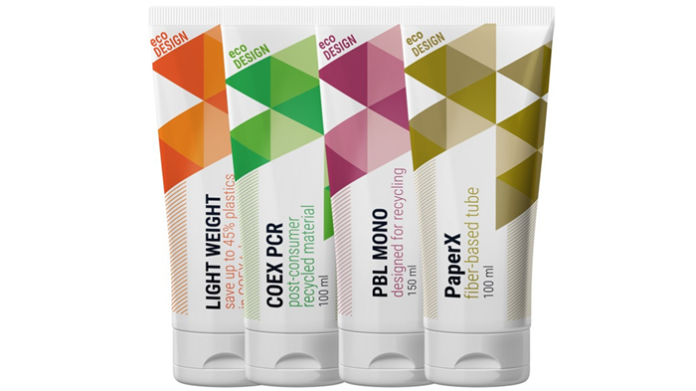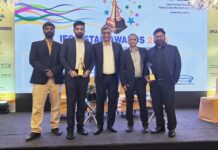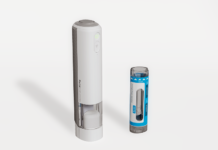Headquartered in the picturesque town of Thun, popularly known as the summer capital of Switzerland, Hoffmann Neopac is a privately owned company producing metal cans and tins, and tube packaging. With manufacturing sites in six locations – Hoffmann Tins in Switzerland and Holland; and Neopac Polyfoil and plastic tubes in Switzerland, Hungary, the US, and India, the company’s customers include pharmaceutical, cosmetics, and consumer goods manufacturers in the European, North American, and Asian markets.
In India, the company operates the Mumbai-based 3D Neopac with its plant in Silvassa, which it acquired in 2017. Born as 3D Technopack in 1997, long before it was acquired by Hoffmann Neopac, 3D invested over Rs 60 crore in equipment and R&D to develop reduced-weight, mono-material, and PCR packaging solutions.

In a conversation with Packaging South Asia, Hoffmann Neopac’s global CEO Mark Aegler and 3D Neopac managing director Anant Gadre spoke about the company’s patented polyfoil tubes and its interest in the Indian and South Asian markets. A family-owned company with a turnover of around 250 million Swiss Francs, Hoffmann Neopack sees the plant Silvassa plant as a first step in a business that it is willing to build steadily over the long term.
The conversation began with Mark Aegler outlining the history of the more than 130 years old company founded in 1890 by Eduard Johann Hoffmann. The company has always been active in Europe, which is its main market, and in the US, with a dual focus – tin or metal packaging and tubes, which is its main focus area.
“On the tube side, our focus was always on three segments – dental tubes, cosmetics, and pharma. The most important for us is pharma. We do have some specific know-how regarding tubes, Apart from the standard tubes, we do have specialty tubes as well,” Aegler explained.
Its Indian investment began with a majority stake in 3D Technopack, which was rechristened as 3D Neopac. “India for us had one or two areas why we were interested in it. In Asia, we do export to a few countries indirectly such as Japan and China. But we felt the need to have an activity here. We were kind of pleased by India because we saw already that it’s a huge and growing market.” What also attracted Hoffmann Neopac to India is its stable legal framework, government, and society. Aegler emphasizes that beyond the physical acquisition human resources are also key as they bring a valuable set of skills and management expertise.
Strength in pharmaceutical tubes and recyclables
The cosmetic and pharma segments are where the company sees potential in India. “We should never forget that India is already the biggest manufacturer of pharmaceutical products. And we saw that this trend will continue. If I say the biggest pharmaceutical market, I am talking about generic pharmaceutical production, so to say.” He sees more of this taking place in India and says that for global generic manufacturers, it is normally seen as an advantage if they can build their packaging on formats, designs, and materials that the market and consumers are already familiar with.
“And that’s where we see in the midterm, in our future in India. We do not want to go into other fields than tubes to which we are very much committed. Right now, we are mostly on the cosmetic side. And we see the possibility to also start the local production for pharmaceutical tubes, where we have special and patented know-how.”
Talking about Neopac’s sustainable tubes, Aegler pointed out that it has 100% recyclables. He spoke about the company’s polyethylene-based polyfoil tubes, that have exceptional printability and shelf impact. Its recently launched state-of-the-art PCR high-barrier tubes are based on the same technology using monomaterials that fit easily in the recycling stream.
The company plans to manufacture these types of tubes in India as Aegler pointed out but in a step-by-step manner. “We have an IP-protected laminate that we developed together with some suppliers, which enables us to use polyethylene with MDO layers that offer a good barrier. But for India, it may take time to bring some of these products. Aegler acknowledged that India could be a competitive market while also emphasizing his company’s unique strengths in the pharmaceutical sector and its ability to partner with manufacturers of all sizes in this sector.
When asked about the company’s metal packaging, Aegler does not foresee bringing this technology to India for several reasons. Comparing metal and plastic, he said, “If it comes to sustainability, I have a divided heart – in the morning, I’m positive about metal. In the afternoon, I prefer plastics. But honestly, if I look at a more science-based approach, I must say, yes, in the future, if you want to have a sustainable material, then the future is in plastics.” He pointed out the much higher energy consumption in metal packaging.
Optimistic realism
Aegler is a realistic optimist concerning the company’s trajectory in the country. “If you look from outer space, India seems to be one of the most attractive countries right now. Although I do see a big potential, I’m also quite realistic. Many of my colleagues compare India with China and I suppose it’s much slower in some aspects simply because it’s a democratic country, and so things can take time.”
On the company’s strategy to stay ahead of the competition in India, Anant Gadre added that it has to be different from how it operates elsewhere. “We have an Indian cost structure and we have Indian customers. In that sense, we are pretty much competing with our competitors in different spheres. If we are to survive, we cannot have a different price model at all.”
Aegler is quite categorical about the idea behind the Indian investment. “We do have a long-term vision. When we start somewhere, we want to stay there for eternity, so to say.” He suggests that India is not just a market or a target, it’s a culture and a perspective that it wants to interact with and learn from. “The tendency of Indians to see things differently is very beneficial for the company.”









